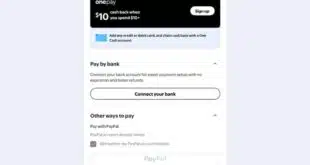While a raft of players over the past several months have introduced software that equips smart phones to accept cards, Ingenico has introduced a wireless point-of-sale device that combines in one unit the ability to take card payments, print receipts, and act as a personal digital assistant (PDA). The French terminal maker, which operates in the U.S. and Canada through its Ingenico North America unit, says the new device, the iPA280, is the first of its kind in its ability to combine high-throughput payments processing with the computing power of a PDA. “When you get into higher volumes of transactions, you need safety and security,” says Chris Justice, president of Alpharetta, Ga.-based Ingenico North America. “That's what's going to continue to separate the payment-terminal business from the iPhone-app type of business.” The new device, which Ingenico colloquially calls the PayPDA, is aimed at businesses whose employees require not only mobility but also the ability to interrogate databases, such as inventory servers, or perform other computing tasks. One intended market is restaurants, where waiters can use the machine to enter orders, receive updates from the kitchen on the progress of orders, and then accept payment at the table. Another application is so-called line-busting, where store clerks can use the device's bar-code reader to not only scan merchandise while customers are standing in line, but process payments as well. The PayPDA, which operates on Bluetooth and WiFi as well as the GSM, GPRS, and Edge wireless networks, comes with a built-in receipt printer and can read both mag-stripe and contactless cards. With a roll of receipt paper and a battery, it weighs in at 19.75 ounces. Justice says developers are working on applications for it now, with pilots set for the first quarter of next year and rollouts in the second quarter. “As these apps are ported over, this will take off pretty quickly,” he predicts. Indeed, Ingenico figures the worldwide market for such a device can support some 800,000 shipments annually. This largely refers to the market made up of “people who have handheld computing but don't have the payments piece,” says Justice. “The U.S. is one of the most significant parts of that number.” Much of this market, he argues, will want a terminal like the PayPDA rather than a smart phone that runs acceptance software. “They're going to need something that's more retail-hardened,” he notes. Over the past six months, companies as diverse as Intuit Inc., Charge Anywhere, TSYS Inc., and Merchant Warehouse have introduced applications that allow mobile phones and smart phones like Apple Inc.'s iPhone and the BlackBerry line of products to accept card transactions. But the mobile-phone approach may have a key advantage over a dual payment terminal/PDA. Adil Moussa, an analyst at Aite Group LLC who follows the merchant-acquiring market, calls the PayPDA “an interesting concept” but says many merchants will balk at paying for wireless plans for the device on top of plans for their existing handsets. “With the cell phones also, you're spending $200 or $300 a month, and that makes it too much for a merchant,” he observes. Then there's the price of the machine itself, which for now is an unknown. Justice won't give a range, saying final pricing will vary widely depending on the marketing channel selling the device.
Check Also
Branded Checkout Helps Buoy PayPal As It Eyes Crypto And BNPL
PayPal Holdings Inc. recorded a tepid 1% growth rate in revenue in the first quarter, …





